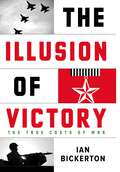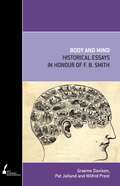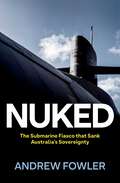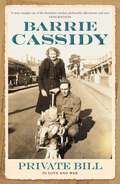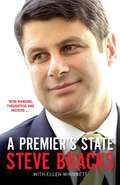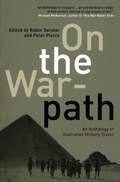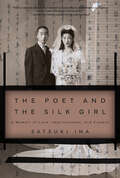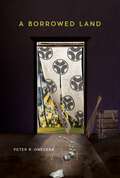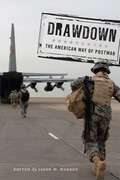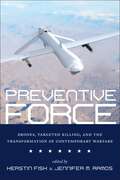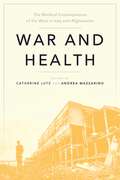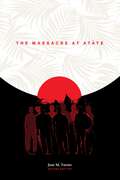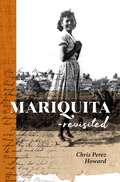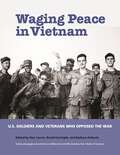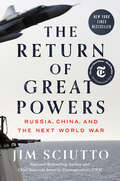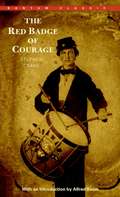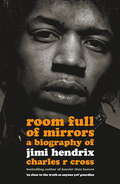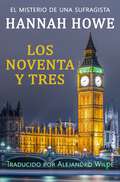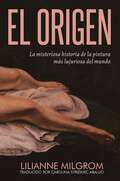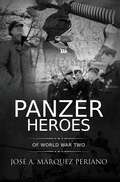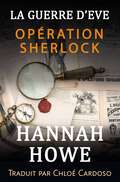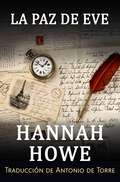- Table View
- List View
Beyond Surrender: Australian prisoners of war in the twentieth century
by Aaron Pegram Joan Beaumont Lachlan GrantOver the twentieth century 35,000 Australians suffered as prisoners of war in conflicts ranging from World War I to Korea. What was the reality of their captivity? Beyond Surrender presents for the first time the diversity of the Australian 'behind-the-wire' experience, dissecting fact from fiction and myth from reality.Beyond Surrender examines the impact that different types of camps, commandants and locations had on surrender, survival, prison life and the prospects of escape. It considers the attitudes of Australian governments to those who had surrendered, the work of relief agencies and the agony of families waiting at home for their husbands, brothers and fathers to be freed.Covering several conflicts and diverse sites of captivity, Beyond Surrender showcases new research from Kate Ariotti, Joan Beaumont, Lachlan Grant, Jeffrey Grey, Karl James, Jennifer Lawless, Peter Monteath, Melanie Oppenheimer, Aaron Pegram, Lucy Robertson, Seumas Spark and Christina Twomey.
Illusion Of Victory: The True Costs of Modern War
by Ian BickertonThe Illusion of Victory demonstrates that most of the rewards of victory in modern warfare are either exaggerated or false. When the ostensible benefits of victory are examined a generation after a war, it becomes inescapably evident that the defeated belligerent rarely conforms to the demands and expectations of the victor. Consequently, long-term political and military stability is denied to both the victorious power and to the defeated one. As a result, neither victory nor defeat deter further outbreaks of war. This sobering reality is increasingly the case in the twentieth and twenty-first centuries. Ian Bickerton persuasively argues that as the rhetoric of victory becomes more hollow all countries must adopt creative new approaches to resolving disputes.
Body and Mind: Historical Essays in Honour of F.B. Smith
by Wilfrid Prest Graeme Davison Pat JallandBody and Mind pays tribute to one of Australia's most outstanding and influential historians, F. B. (Barry) Smith. Barry has made pioneering contributions to the political, social and cultural histories of Britain and Australia, and these essays range across the fields he made his own, especially the interconnected histories of medicine (body) and ideas (mind). The editors bring together several generations of Barry's admirers, colleagues, friends and pupils, including Joanna Bourke writing on war and industrial trauma, Peter Edwards on the Agent Orange controversy, Pat Jalland on death in the London Blitz and Phillipa Mein Smith on the idea of Australasia. Body and Mind is a salute to the inestimable work, and the life and times of F. B. Smith.
Nuked: The Submarine Fiasco that Sank Australia's Sovereignty
by Andrew FowlerLike all military acquisition programs worth billions of dollars, Australia's decision to buy a new submarine fleet was expected to be a torturous process. But no one could have predicted the trail of wreckage it left behind, from the boulevards of Paris to the dockyards of Adelaide, as deep inside the Australian Government a secret group conspired to overthrow the winning French bid. In this tale of treachery and intrigue, Andrew Fowler exposes the lies and deception that so outraged the President of France. Interviewing many of the main people involved and talking to sources in Paris, London, Washington and Canberra, Fowler pieces together the plot to sink the French and switch to a nuclear-powered US submarine - a botched operation that severely compromised Australia's ability to defend itself.
Private Bill: In Love and War
by Barrie CassidyBarrie Cassidy's dad Bill survived more than four years as a prisoner of war in World War II. He first saw conflict on Crete in May 1941, during the only large-scale parachute invasion in wartime history. Just four days later, Bill was wounded and eventually captured.Twice he tried to escape his internment—with horrific consequences. He suffered greatly but found courageous support from his fellow prisoners.His new wife Myra and his large family thought he was dead until news of his capture finally reached them.Back home, Myra too was a prisoner of sorts, with her own secrets. Then, fifty years after the war, unhealed wounds unexpectedly opened for Bill and Myra, testing them once again.Private Bill is a classic heart-warming story—as told by their son—of how a loving couple prevailed over the adversities of war to live an extraordinarily ordinary, happy life.
Premier's State
by Ellen Whinnett Steve Bracks'In May 1994, while I was going through pre-selection for the seat of Williamstown, I sat down at my desk at home and I wrote a note. I was thirty-nine years old and in that note I mapped out what I hoped would happen in my life.'By the time he was forty-eight, Steve Bracks had achieved the goal he'd set himself nine years earlier. He was premier of Victoria. In A Premier's State he reflects on his ambition to make a difference, and how he reached his goal. He talks about his early childhood growing up in a conservative but impassioned family that supported the Democratic Labor Party, and about his gradual evolution from left-wing university radical to pragmatic centre-left premier. He reveals for the first time the background to his decision to take the party's leadership from his friend John Brumby in 1999—then to hand it back to John in 2007 when he sensationally resigned from office. He gives insights into how to run a successful government and how to manage the factions, and talks about everything from the impact of public life on his family, to forming minority government with independents.
On The War-path: An Anthology of Australian Military Travel
by Peter Pierce Robin GersterThis important anthology reveals the many ways in which going to war has formed a cultural bridge between Australia and the world. From the Sudan in 1885 to Afghanistan in 2001, the connection of war to travel is illustrated in the observations of writers as varied as 'Banjo' Paterson, George Johnston, Nancy Wake, John Pilger, Lily Brett and Peter Weir. Selecting writings from combatants abroad as well as the reflections of sightseers who travel to foreign battlefields and war sites, Robin Gerster and Peter Pierce reveal how the experience of war has both broadened and refined (and sometimes distorted) Australian views of the world. Their lively collection crosses the boundaries between literature, literary criticism, travel writing, war writing and cultural commentary.
The Poet and the Silk Girl: A Memoir of Love, Imprisonment, and Protest
by Satsuki InaA compelling and prismatic love story of one family's defiance in the face of injustice—and how their story echoes across generations."It is both overwhelming and affirming to imagine, in the midst of their darkest hours, and in the middle of a country and a war that willfully misperceived them as enemy aliens, that the future, for Itaru and Shizuko Ina, was not only possible, but would deliver redemption in the form of the intimate, inexhaustible attention of a daughter." —Brandon Shimoda, author of The Grave on the WallIn 1942 newlyweds Itaru and Shizuko Ina were settling into married life when the United States government upended their world. They were forcibly removed from their home and incarcerated in wartime American concentration camps solely on account of their Japanese ancestry. When the Inas, under duress, renounced their American citizenship, the War Department branded them enemy aliens and scattered their family across the U.S. interior. Born to Itaru and Shizuko during their imprisonment, psychotherapist and activist Satsuki Ina weaves their story together in this moving mosaic. Through diary entries, photographs, clandestine letters, and heart-wrenching haiku, she reveals how this intrepid young couple navigated life, love, loss, and loyalty tests in the welter of World War II-era hysteria.The Poet and the Silk Girl illustrates through one family's saga the generational struggle of Japanese Americans who resisted racist oppression, fought for the restoration of their rights, and clung to their full humanity in the face of adversity. With psychological insight, Ina excavates the unmentionable, recovering a chronicle of resilience amidst one of the severest blows to American civil liberties. As she traces the legacies of trauma, she connects her family's ordeal to modern-day mass incarceration at the U.S.-Mexico border. Lyrical and gripping, this cautionary tale implores us to prevent the repetition of atrocity, pairing healing and protest with galvanizing power.
A Borrowed Land
by Peter R. OnederaA Borrowed Land tells the untold stories of Guam’s Nikkei—people of Japanese descent—before, during, and after World War II. As the descendant of an issei, or firstgeneration immigrant, Peter R. Onedera chronicles the Nikkei’s experiences in Guam from their arrival to their assimilation into the island’s life and culture, their hardship and resilience during the war, and the struggles they endured after. Onedera interweaves both historical and personal accounts to document how heritage and history shape personal and collective identity. The story also unveils the complexities of Onedera’s own healing, as he explores his CHamoruJapanese heritage and reveals the discrimination he and other Nikkei experienced in postwar Guam.
Drawdown: The American Way of Postwar (Warfare and Culture #8)
by Jason W. WarrenAnalyzes the cultural attitudes, political decisions, and institutions surrounding the maintenance of armed forces throughout American history While traditionally, Americans view expensive military structure as a poor investment and a threat to liberty, they also require a guarantee of that very freedom, necessitating the employment of armed forces. Beginning with the seventeenth-century wars of the English colonies, Americans typically increased their military capabilities at the beginning of conflicts only to decrease them at the apparent conclusion of hostilities. In Drawdown: The American Way of Postwar, a stellar team of military historians argue that the United States sometimes managed effective drawdowns, sowing the seeds of future victory that Americans eventually reaped. Yet at other times, the drawing down of military capabilities undermined our readiness and flexibility, leading to more costly wars and perhaps defeat. The political choice to reduce military capabilities is influenced by Anglo-American pecuniary decisions and traditional fears of government oppression, and it has been haphazard at best throughout American history. These two factors form the basic American “liberty dilemma,” the vexed relationship between the nation and its military apparatuses from the founding of the first colonies through to present times. With the termination of large-scale operations in Iraq and the winnowing of forces in Afghanistan, the United States military once again faces a significant drawdown in standing force structure and capabilities. The political and military debate currently raging around how best to affect this force reduction continues to lack a proper historical perspective. This volume aspires to inform this dialogue. Not a traditional military history, Drawdown analyzes cultural attitudes, political decisions, and institutions surrounding the maintenance of armed forces.
Preventive Force: Drones, Targeted Killing, and the Transformation of Contemporary Warfare
by Jennifer M. Ramos Kerstin FiskExamines the recent rise in the United States' use of preventive forceMore so than in the past, the US is now embracing the logic of preventive force: using military force to counter potential threats around the globe before they have fully materialized. While popular with individuals who seek to avoid too many “boots on the ground,” preventive force is controversial because of its potential for unnecessary collateral damage. Who decides what threats are ‘imminent’? Is there an international legal basis to kill or harm individuals who have a connection to that threat? Do the benefits of preventive force justify the costs? And, perhaps most importantly, is the US setting a dangerous international precedent? In Preventive Force, editors Kerstin Fisk and Jennifer Ramos bring together legal scholars, political scientists, international relations scholars, and prominent defense specialists to examine these questions, whether in the context of full-scale preventive war or preventive drone strikes. In particular, the volume highlights preventive drones strikes, as they mark a complete transformation of how the US understands international norms regarding the use of force, and could potentially lead to a ‘slippery slope’ for the US and other nations in terms of engaging in preventive warfare as a matter of course. A comprehensive resource that speaks to the contours of preventive force as a security strategy as well as to the practical, legal, and ethical considerations of its implementation, Preventive Force is a useful guide for political scientists, international relations scholars, and policymakers who seek a thorough and current overview of this essential topic.
Returns of War: South Vietnam and the Price of Refugee Memory (Nation of Nations #32)
by Long T. BuiThe legacy and memory of wartime South Vietnam through the eyes of Vietnamese refugees In 1975, South Vietnam fell to communism, marking a stunning conclusion to the Vietnam War. Although this former ally of the United States has vanished from the world map, Long T. Bui maintains that its memory endures for refugees with a strong attachment to this ghost country. Blending ethnography with oral history, archival research, and cultural analysis, Returns of War considers how the historical legacy of a nation that only existed for twenty years is being kept alive by its dispersed stateless exiles.Returns of War argues that Vietnamization--as Richard Nixon termed it in 1969--and the end of South Vietnam signals more than an example of flawed American military strategy, but a larger allegory of power, providing cover for U.S. imperial losses while denoting the inability of the (South) Vietnamese and other colonized nations to become independent, modern liberal subjects. Bui argues that the collapse of South Vietnam under Vietnamization complicates the already difficult memory of the Vietnam War, pushing for a critical understanding of South Vietnamese agency beyond their status as the war’s ultimate “losers.” Examining the lasting impact of Cold War military policy and culture upon the “Vietnamized” afterlife of war, this book weaves questions of national identity, sovereignty, and self-determination to consider the generative possibilities of theorizing South Vietnam as an incomplete, ongoing search for political and personal freedom.
War and Health: The Medical Consequences of the Wars in Iraq and Afghanistan (Anthropologies of American Medicine: Culture, Power, and Practice #4)
by Catherine Lutz and Andrea MazzarinoProvides a detailed look at how war affects human life and health far beyond the battlefield Since 2010, a team of activists, social scientists, and physicians have monitored the lives lost as a result of the US wars in Iraq, Afghanistan, and Pakistan through an initiative called the Costs of War Project. Unlike most studies of war casualties, this research looks beyond lives lost in violence to consider those who have died as a result of illness, injuries, and malnutrition that would not have occurred had the war not taken place. Incredibly, the Cost of War Project has found that, of the more than 1,000,000 lives lost in the recent US wars, a minimum of 800,000 died not from violence, but from indirect causes. War and Health offers a critical examination of these indirect casualties, examining health outcomes on the battlefield and elsewhere—in hospitals, homes, and refugee camps—both during combat and in the years following, as communities struggle to live normal lives despite decimated social services, lack of access to medical care, ongoing illness and disability, malnutrition, loss of infrastructure, and increased substance abuse. The volume considers the effect of the war on both civilians and on US service members, in war zones—where healthcare systems have been destroyed by long-term conflict—and in the United States, where healthcare is highly developed. Ultimately, it draws much-needed attention to the far-reaching health consequences of the recent US wars, and argues that we cannot go to war—and remain at war—without understanding the catastrophic effect war has on the entire ecosystem of human health.
The Massacre at Atåte, 2nd Edition
by Jose M. TorresTorres' story of courage, endurance and heroism in 'The Massacre at Atåte'The Massacre at Atåte tells the story of the courageous people of the idyllic southern village of Malesso' in Guam, who liberated themselves from the violent occupation of their village by Japanese forces during World War II. After scores of their relatives were killed in two massacres, a group of CHamoru men rose up in a littleknown place called Atåte, where they fought and massacred the Japanese to protect their families. The book includes an introduction by Guam’s former Representative to U.S. Congress Dr. Robert A. Underwood, and an afterword by Guam Historian Dr. Michael Lujan Bevacqua.
Mariquita—Revisited
by Chris Perez HowardMariquita, first published in 1982, has become the most widely read novel about the CHamoru experience during World War II on Guam. In the book, author Chris Perez Howard chronicles his mother's vibrant life before the War, her enduring strength during the Japanese occupation of the island, and her tragic death at the end of it. In this updated edition of the classic, Perez Howard revisits the story and adds more details, photos, and letters. It is a continuing tribute to his mother whose legacy lives on in the memories of all who read it.
Waging Peace in Vietnam: US Soldiers and Veterans Who Opposed the War
by Ron Carver, David Cortright, and Barbara DohertyHow American soldiers opposed and resisted the war in VietnamWhile mainstream narratives of the Vietnam War all but marginalize anti-war activity of soldiers, opposition and resistance from within the three branches of the military made a real difference to the course of America’s engagement in Vietnam. By 1968, every major peace march in the United States was led by active duty GIs and Vietnam War veterans. By 1970, thousands of active duty soldiers and marines were marching in protest in US cities. Hundreds of soldiers and marines in Vietnam were refusing to fight; tens of thousands were deserting to Canada, France and Sweden. Eventually the US Armed Forces were no longer able to sustain large-scale offensive operations and ceased to be effective. Yet this history is largely unknown and has been glossed over in much of the written and visual remembrances produced in recent years. Waging Peace in Vietnam shows how the GI movement unfolded, from the numerous anti-war coffee houses springing up outside military bases, to the hundreds of GI newspapers giving an independent voice to active soldiers, to the stockade revolts and the strikes and near-mutinies on naval vessels and in the air force. The book presents first-hand accounts, oral histories, and a wealth of underground newspapers, posters, flyers, and photographs documenting the actions of GIs and veterans who took part in the resistance. In addition, the book features fourteen original essays by leading scholars and activists. Notable contributors include Vietnam War scholar and author, Christian Appy, and Mme Nguyen Thi Binh, who played a major role in the Paris Peace Accord.The book originates from the exhibition Waging Peace, which has been shown in Vietnam and the University of Notre Dame, and will be touring the eastern United States in conjunction with book launches in Boston, Amherst, and New York.
The Return of Great Powers: Russia, China, and the Next World War
by Jim SciuttoInstant New York Times BestsellerA Politico Top 10 Most Anticipated Book of 2024A New York Times Notable BookA New York Times Book Review Editors' Choice&“An absorbing account of 21st-century brinkmanship . . . . one that should be read by every legislator or presidential nominee sufficiently deluded to think that returning America to its isolationist past or making chummy with Putin is a viable option in today&’s world.&” –New York Times Book ReviewThe essential new book by CNN anchor and chief national security analyst Jim Sciutto, identifying a new, more uncertain global order with reporting on the frontlines of power from existing wars to looming ones across the globe. The fall of the Berlin Wall in 1989 dawned what Francis Fukuyama called &“The End of History.&” Three decades later, Jim Sciutto said on CNN&’s air as the Ukraine war began, that we are living in a &“1939 moment.&” History never ended—it barely paused—and the global order as we long have known it is now gone. Powerful nations are determined to assert dominance on the world stage. And as their push for power escalates, a new order will affect everyone across the globe. Russia&’s invasion of Ukraine is a part of it, but in reality, this power struggle impacts every corner of our world—from Helsinki to Beijing, from Australia to the North Pole. This is a battle with many fronts: in the Arctic, in the oceans and across the skies, on man-made islands and redrawn maps, and in tech and cyberspace.Through globe-spanning, exclusive interviews with dozens of political, military, and intelligence leaders, Sciutto defines our times as a return of great power conflict, &“a definitive break between the post–Cold War era and an entirely new and uncertain one.&” With savvy, thorough, in-person reporting, he follows-up his 2019 bestseller, The Shadow War: Inside Russia&’s and China's Secret Operations to Defeat America, which focused on the covert tactics of a hidden conflict. The Return of Great Powers analyzes a historic and visible shift in real time. It details the realities of this new post–post–Cold War era, the increasingly aligned Russian and Chinese governments, and the flashpoint of a new, global nuclear arms race. And it poses a question: As we consider uncertain, even terrifying, outcomes, will it be possible for the West and Russia and China to prevent a new World War?
The Red Badge of Courage
by Stephen CraneThe Red Badge of Courage was published in 1895, when its author, an impoverished writer living a bohemian life in New York, was only twenty-three. It immediately became a bestseller, and Stephen Crane became famous. Crane set out to create "a psychological portrayal of fear." Henry Fleming, a Union Army volunteer in the Civil War, thinks "that perhaps in a battle he might run....As far as war was concerned he knew nothing of himself." And he does run in his first battle, full of fear and then remorse. He encounters a grotesquely rotting corpse propped against a tree, and a column of wounded men, one of whom is a friend who dies horribly in front of him. Fleming receives his own "red badge" when a fellow soldier hits him in the head with a gun. "The idea of falling like heroes on ceremonial battlefields," Ford Madox Ford remarked later, "was gone forever." Shelby Foote, author of The Civil The Modern Library has played a significant role in American cultural life for the better part of a century. The series was founded in 1917 by the publishers Boni and Liveright and eight years later acquired by Bennett Cerf and Donald Klopfer. It provided the foundation for their next publishing venture, Random House. The Modern Library has been a staple of the American book trade, providing readers with afford-able hardbound editions of impor-tant works of literature and thought. For the Modern Library's seventy-fifth anniversary, Random House redesigned the series, restoringas its emblem the running torch-bearer created by Lucian Bernhard in 1925 and refurbishing jackets, bindings, and type, as well as inau-gurating a new program of selecting titles. The Modern Library continues to provide the world's best books, at the best prices.
Room Full of Mirrors: A Biography of Jimi Hendrix
by Charles R. Cross'Charles R. Cross has got as close to the truth as anyone yet in his exhaustive and ground-breaking account of the life of the greatest guitarist in the history of rock.' Observer'Superb'Sunday TelegraphJimi Hendrix continues to fascinate, and sell huge quantities of albums, even 35 years after his death. Quite apart from his influence on musicians and fans, a large part of the appeal of his sensational life story lies in the thrill of the era whose values he came to stand for. The Sixties still exert a massive pull over pop culture and this is genuinely a book for anyone interested, not only in Hendrix but also in anything to do with the pop culture of the last 40 years.Meticulously researched and sensitively and beautifully written, this is a labour of love that reveals the nuances, foibles and tragedies of the human being behind the iconic image.This is the sweeping, authoritative and colourful biography that Jimi Hendrix and that his legions of fans, young and old deserves.
Los Noventa y Tres: El misterio de una sufragista
by Hannah HoweUna novela que se desarrolla en 1918. Acusada de un asesinato, la socialité, sufragista, socióloga y profesora, Anna Richards, tiene que escapar. Al estar huyendo, se encuentra con un héroe de La Gran Guerra, el capitán Aubrey Howell, quien también se oculta de las autoridades. Pese a haber luchado con gran valentía, al capitán Howell se le busca por deserción. Él se negó a llevar a sus hombres a una misión suicida, por lo que se le envió a la corte marcial y fue sentenciado a muerte. Anna y Aubrey hacen equipo para salvar sus pellejos y resolver el misterio de Los Noventa y Tres.
El origen: La misteriosa historia de la pintura más lujuriosa del mundo
by Lilianne MilgromUna fascinante historia de supervivencia que relata la odisea secreta de la obra maestra más escandalosa del mundo a través de siglos y continentes. PORTADA GANADORA DE SEIS PREMIOS DE FICCIÓN «Milgrom combina historia del arte, historia social, biografía y ficción de manera magistral en esta novela con el cuidado y atención al detalle de un maestro de los retratos». WRITERS DIGEST «Lilianne Milgrom nos ofrece una lectura entretenida y provocadora que se quedará con nosotros incluso ya acabado el libro». CALIFORNIA REVIEW OF BOOKS «El origen me atrapó —¡qué historia!» HARRIET WELTY ROCHEFORTK, autora de French Fried, French Toast y Joi de Vivre. La fascinante odisea de una de las obras de arte más escandalosas de la historia. En 1866, el inconformista artista Gustave Courbet pintó uno de los cuadros más icónicos de la historia del arte: una representación sexualmente explícita de los genitales de una mujer al descubierto. Con el atrevido título de L’Origine du monde (El origen del mundo), la pintura resultó ser tan escandalosa que la mantuvieron oculta durante ciento cincuenta años. Hoy en día se encuentra expuesta en el renombrado Museo de Orsay, dónde millones de visitantes acuden a verla cada año. Al ser la primera artista autorizada por el Museo de Orsay para recrear El origen del mundo de Courbet, la autora, Lilianne Milgrom, se vio atrapada en la órbita más íntima de la obra. Su singular experiencia fue lo que la llevó a compartir su propia historia y la fascinante vida de la clandestina pintura con lectores fuera del mundo del arte. El origen en una obra rigurosamente documentada, y entretenida, de ficción histórica. Narra la verídica y alocada historia de supervivencia de la obra, repleta de revoluci
Panzer Heroes of World War II: [N.A.] ([N.A.] #1)
by José A. Márquez PerianoHistory of the most highly decorated military personnel of the armored forces of the Third Reich.
Opération Sherlock: La guerre d'Eve : Les héroïnes du SOE (La guerre d'Eve : Les héroïnes du SOE #5)
by Hannah Howe"Arthur est préoccupé par la dernière arme de terreur des nazis", expliqua Guy. "Des fusées ; elles ont le pouvoir de semer la mort, la destruction et le chaos en Grande-Bretagne. Il veut que nous localisions le site de lancement pour que la RAF puisse le bombarder." "Comment allons-nous faire cela ?" demandai-je. "La Résistance à Paris pense avoir repéré le site", répondit Guy. "Arthur souhaite que nous confirmions leurs soupçons." "Pourquoi le réseau local de Sherlock ne s'en charge-t-il pas ?" demanda Mimi. "Récemment," répondit Guy, "la Gestapo a capturé leur opérateur radio. Leur réseau est complètement désorganisé. La confiance est au plus bas." Je jetai un regard à Mimi et remarquai son visage pâle et tendu. En tant qu'opératrice radio, elle vivait sous une pression permanente ; chaque transmission était un instant à haut risque, un instant de potentiel capture. Un voyage à Paris semblait excitant. Pourtant, le regard préoccupé de Mimi me rappela que nous nous engagions dans une mission périlleuse, peut-être même mortelle.
LA PAZ DE EVE: Una secuela de La guerra de Eve, las heroínas de la SOE (La guerra de Eve: heroínas de la SOE #13)
by Hannah HoweAmbientada en 1948, La paz de Eve es una novela breve e independiente que evoca el pasado de Eva, sus luchas en el presente y sus esperanzas para el futuro. —Estoy aquí porque Cunningham quiere que encuentre a la Kriminalrätin Gisela Winter. Trabaja para un nuevo departamento, muy confidencial. —¿La quieren para los juicios de crímenes de guerra? —Eso dijo, pero sospecho que sus motivos van más allá. —¿Por qué lo crees? —preguntó Guy. —Cunningham mostró poco interés en Gisela Winter cuando regresamos de Francia; no era una prioridad para él entonces. Creo que algo ha surgido en estos tres años, algo que ha llamado la atención de Cunningham y su nuevo departamento. Tal vez esté relacionado con crímenes de guerra, o quizá con otro aspecto de la vida de Gisela. —¿Por dónde empezarás? —Marsella. —¿Hablarás con Michel y miembros de la Resistencia? —Sí. Guy dudó. Parecía inquieto, confuso. —¿Michel aún quiere que vuelvas con él? —Sí. —¿Y tú cómo te sientes con eso? Observé el muro en la zanja. Solo quedaban los cimientos. Aun así, era notable que esa estructura hubiera sobrevivido dos mil años. Me pregunté si nuestros edificios durarían tanto. —¿Todavía lo amas? —insistió Guy. Lo miré a los ojos. —El hombre al que amo eres tú —afirmé.
Sea Wolves of the Kriegsmarine: [N.A.]
by José A. Márquez PerianoOf all the units of the German armed forces, it was the men of its submarine force who suffered the highest proportion of casualties: around 85%. How is it possible that, despite the enormous number of casualties, the U-Boat force of the Third Reich inflicted such significant losses on the Allied naval forces? It was all due to the daring of the officers and crew members who formed part of this branch of the Kriegsmarine during World War II. In this book, you will learn about the most decorated submarine captains of the war, as well as the most memorable actions of the war aboard the dangerous submarines serving Adolf Hitler’s war machine. We will also explore the most widely used combat tactics and the deadliest submarines of the war, as well as all the stages of the submarine warfare that could have tilted the victory in favor of the Axis powers. Günter Prien, Karl Dönitz, Erich Topp, Reinhard Hardegen, and many more... all gathered in one pack, the wolves of the Kriegsmarine.

